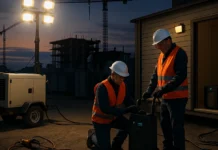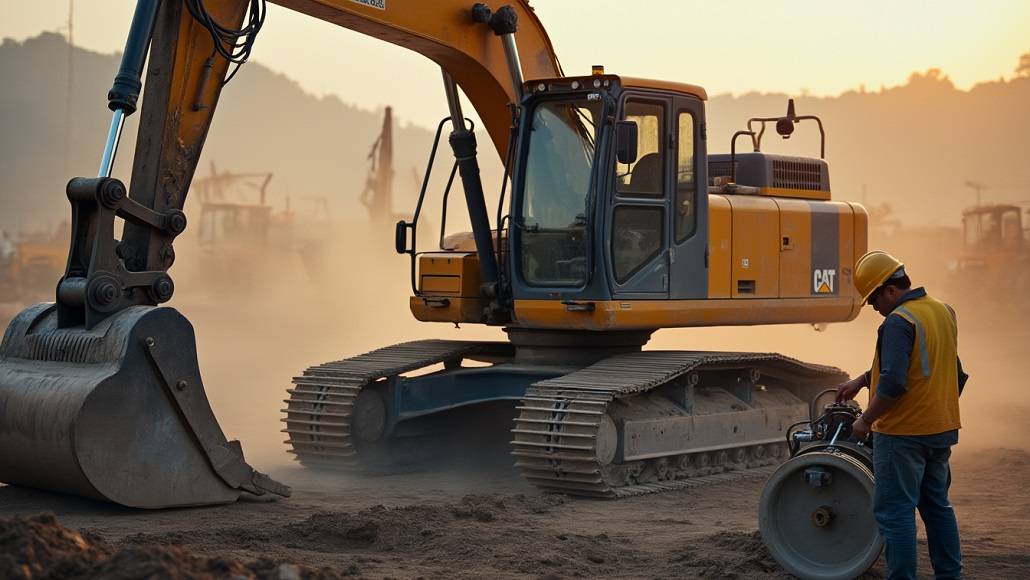Changing out attachments on an excavator might seem easy, but the stakes are anything but casual. Be it swapping a bucket for a compaction wheel or gearing up with a hydraulic grab, every switch needs to be deliberate, safe, and smooth.
The increasing variety of excavator attachments has certainly raised the bar in terms of on-site productivity. However, they have also added a layer of complexity that can’t be ignored.
Get Compatibility Right or Risk a Costly Mistake
Not every attachment is a plug-and-play solution. Just because something clicks into place does not mean it is good to go. Using incompatible gear can lead to equipment failure, unsafe working conditions, and unwanted downtime. Hydraulic systems, weight tolerances, and mounting configurations need to match up precisely with the host machine.
Before making the switch, check your specs. The attachment’s capabilities should align not only with the excavator, but also with the demands of the job and the terrain you’re working on. A good supplier will guide you on compatibility, but the final checkpoint has to be the operator or site supervisor.
The Importance of a Standardised Procedure
Switching attachments should follow a set routine. Start with stabilising the machine, then bleed off any built-up hydraulic pressure before touching a single hose or pin. Follow the steps in the right order, disengage, secure, check. There is no room for mistake here. Miss a step, and you could be looking at leaking fluids, crushed fittings, or an attachment that drops mid-operation.
Quick hitches, particularly the hydraulic kind, are brilliant for speeding up the process, but they are not maintenance-free. If one fails, it can cause serious damage or injury.
Prioritising Operator Training and Familiarity
Even the best kit in the world is only as safe as the person using it. That is why operator training should go beyond checklists. It is never just about knowing how to switch attachments, but also understanding why each action matters. Is that pin worn down? Is the coupler sitting flush? Can you feel the hydraulic lines pressurising the way they should?
Experienced operators tend to spot small inefficiencies others might miss. Maybe the machine is parked on uneven ground or the hose routing could be cleaner. Tapping into that first hand knowledge helps refine site protocols and encourages a more proactive safety culture.
Equipment Maintenance as a Preventive Measure
A seized pin or a cracked hose can grind your day to a halt. That said, regular maintenance is a must. Locking mechanisms, quick hitches, hydraulic lines, even the fittings themselves, every component involved in switching attachments takes a beating over time.
Make inspection part of the daily routine. Start the morning with a quick visual check, then dive deeper as per your service schedule. Clean connectors properly before hooking up because grit and dust can do more damage than most people realise.
Don’t Let Poor Planning Slow You Down
Most equipment operators treat attachment switching as an afterthought, and that is where the problems begin. A little foresight, allocating tools, space, and people, makes a huge difference. When switching is factored into the broader job flow, it no longer feels like a disruption.
These days, technology has your back too. Some machines now come with smart couplers that alert you if something is not locked in properly. Others can log changeovers for better traceability. If your fleet isn’t already using a central system to manage attachments, now is a good time to rethink that.
Takeaways
The more flexible your operations become, the more critical it is to treat each changeover with the care it deserves. Remember, the goal is not just to save time but also extend the life of your gear, protect your team, and keep projects moving without hiccups.
By sticking to smart procedures, staying on top of maintenance, and giving operators the training and tools they need, attachment switching becomes easier and safer.






























